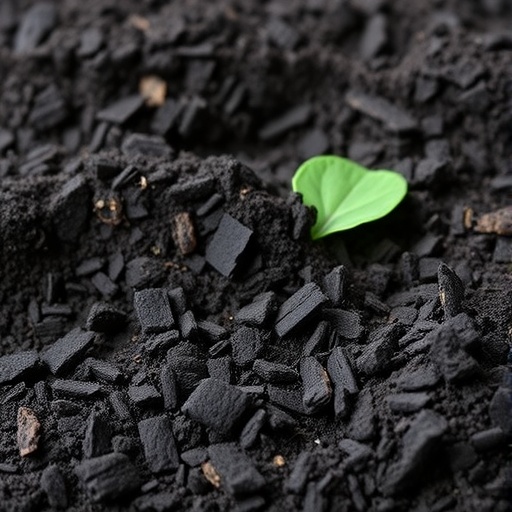Researchers have made a significant breakthrough in the realm of environmental science with a study titled “Adsorption characteristics of ammonia nitrogen by modified waste corn straw-based biochar.” This research, spearheaded by scholars Li, J., Zhang, T., and Wang, P., delves into the potential of utilizing modified biochar derived from agricultural waste as an effective solution for ammonia nitrogen removal from wastewater. The findings, published in the Environmental Science and Pollution Research journal, herald a new era in addressing one of the pressing challenges in water pollution.
Ammonia nitrogen is a prevalent pollutant found in various water bodies, primarily resulting from agricultural runoff and industrial discharge. Its presence poses severe risks to aquatic life and can disrupt ecosystems. The increasing levels of ammonia nitrogen in waterways necessitate immediate and effective remediation strategies. Researchers, acknowledging this critical environmental issue, have sought to explore the capabilities of modified biochars as alternative adsorbent materials for ammonia nitrogen removal.
Biochar, a carbon-rich product obtained from the pyrolysis of organic materials, has gained traction in recent years due to its remarkable adsorption properties, stability, and versatility. It presents a sustainable method for waste management, particularly when derived from agricultural residues like corn straw. What sets this study apart is the focused modification of corn straw-based biochar, aimed at maximizing its usability and efficiency in ammonia nitrogen adsorption.
Through rigorous experimentation, the researchers employed various modification techniques to enhance the surface area and functional groups of the biochar. The modifications play a crucial role in optimizing the adsorption capacity of the biochar, allowing it to interact more effectively with ammonia molecules. The results demonstrated significant improvements in the adsorption characteristics post-modification, indicating the potential for this sustainable material to be a game-changer in wastewater treatment processes.
A novel aspect of this research is its emphasis on scaling up the application of modified biochar in real-world scenarios. The team conducted field tests to assess the performance of the biochar under varying environmental conditions, thereby providing invaluable insights into its practicality for widespread adoption. The successful results reassert the viability of using agricultural waste as a basis for developing advanced materials that can mitigate environmental pollution.
In addition to its technical advancements, the study highlights the importance of integrating sustainable practices into waste management strategies. By converting agricultural waste into functional biochar, the research aligns with circular economy principles, minimizing waste while providing a valuable resource for environmental remediation. This holistic approach could significantly reduce the environmental footprint associated with both agricultural activities and wastewater discharge.
The researchers are optimistic about future applications, suggesting that the developed modified biochar could also be beneficial for the adsorption of other contaminants, thereby enhancing its utility beyond just ammonia nitrogen removal. This opens the door to further research opportunities, allowing scholars to explore the potential of biochar in tackling a broader range of pollutants across various ecosystems.
Moreover, the impact of this research extends to policymakers and environmental stakeholders who aim to develop effective regulations for water quality management. By demonstrating the efficacy of modified biochar, the findings can inform strategies and guidelines that encourage the adoption of sustainable technologies in industries contributing to water pollution.
As the world grapples with escalating environmental challenges, the innovative use of modified biochar emerges as a beacon of hope. The ability to transform waste materials into invaluable resources exemplifies the power of innovative thinking in sustainable development. This research not only underscores the importance of scientific inquiry but also emphasizes the critical need for collaborative efforts among scientists, industry leaders, and policymakers.
In conclusion, the study by Li, J., Zhang, T., and Wang, P. not only advances our understanding of ammonia nitrogen adsorption but also sparks a dialogue about the potential of biochar as a frontline solution to combat environmental degradation. As this research garners attention and encouragement from the scientific community, it is poised to pave the way for a greener and more sustainable future.
The implications of this study are profound, as they encourage investment and interest in biochar research and development, potentially leading to widespread implementation across various sectors. This paradigm shift could significantly alter how we perceive waste materials, transforming them from mere refuse into critical components in our efforts to create a cleaner and healthier planet.
As we anticipate future developments in this field, it becomes evident that the innovation demonstrated in this research carries immense importance for both scientific advancement and environmental restoration. The quest for sustainability hinges on our ability to embrace such transformative ideas, thus redefining our relationship with the environment for generations to come.
Subject of Research: Ammonia nitrogen adsorption using modified corn straw-based biochar.
Article Title: Adsorption characteristics of ammonia nitrogen by modified waste corn straw-based biochar.
Article References:
Li, J., Zhang, T., Wang, P. et al. Adsorption characteristics of ammonia nitrogen by modified waste corn straw-based biochar.
Environ Sci Pollut Res (2025). https://doi.org/10.1007/s11356-025-37046-3
Image Credits: AI Generated
DOI:
Keywords: Ammonia nitrogen, biochar, wastewater treatment, sustainability, environmental science.




